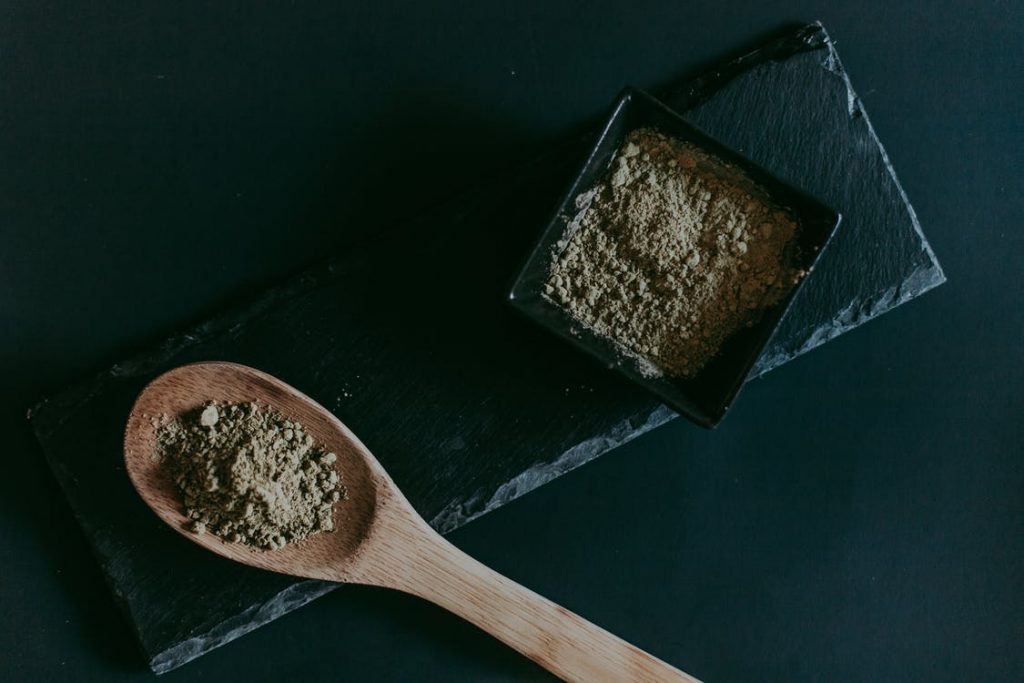
Recent studies have revealed that taking the correct dosage of this botanical substance is crucial for its effectiveness, as well as for maintaining well-being and ensuring safety.
So, when using kratom, it’s important to note that the quantity held in a teaspoon varies between 2.0 and 3.0 grams. However, this amount can differ depending on a person’s unique body chemistry, tolerance, and the desired effects. Keep in mind that kratom can have either stimulating or calming effects, and the dosage plays a crucial role in determining its impact. Therefore, precise measurement is essential for achieving the desired outcome.
For those using kratom, especially from the best kratom brands, knowing how to measure doses correctly is critical to getting the benefits while avoiding risks. This guide will explain how many grams are usually in a teaspoon of kratom and suggest other ways to measure doses accurately, helping users find a balanced and practical approach.
Understanding Kratom And Its Uses
Kratom (Mitragyna speciosa) has been traditionally used in countries like Thailand, Indonesia, Malaysia, and Papua New Guinea for centuries. It is known for alleviating pain, boosting energy, and enhancing mood. In recent years, it has become popular in other parts of the world, including the United States, as an alternative treatment for pain, anxiety, depression, and opioid withdrawal.
Importance of Accurate Dosage In Kratom
The effects of kratom are dose-dependent. Cannabis plants thrive in moderate temperatures, and kratom also differs based on environmental factors. At lower doses, kratom acts as a stimulant, making users feel more energetic. It has sedative effects at higher doses, which can help relieve pain and induce relaxation. Because the effects vary so widely depending on the dose, users need to measure their kratom accurately.
Measuring Kratom: Teaspoon Vs. Gram
When measuring kratom, some users prefer using a kitchen spoon, while others opt for a more precise scale. Understanding the weight of kratom in a teaspoon can help in approximating dosages when a scale is not available.
Insight On Factors Affecting Weight Of Kratom
Several factors can influence how much good kratom fits into a teaspoon:
- Powder Density: Finely ground kratom powder is more compact and weighs more than coarsely ground powder.
- Moisture Content: Kratom that has absorbed moisture from the air will weigh more than dry kratom.
- Spoon Variability: Not all teaspoons are created equal; slight variations in size can affect the amount of kratom they hold.
In addition, it is more advantageous to consume these supplements from a reputable brand, such as Happy Go Leafy.
Standard Measurement
On average, one level teaspoon of kratom powder typically weighs between 2.0 and 2.5 grams. However, this can vary slightly based on the factors mentioned above.
Fine Powder
For finely ground kratom powder, you can expect the weight to be closer to the higher end of the spectrum, around 2.5 grams per teaspoon.
Coarse Powder
For coarser kratom powder, the weight might be on the lower end, around 2.0 grams per teaspoon.
Methods for Accurate Measurement Of Kratom
To ensure you are consuming the correct amount of kratom, it is advisable to use a digital scale. This allows for precise measurement and reduces the risk of taking too much or too little.
Using A Scale
- Turn on the Scale: Make sure it is set to grams.
- Place a Container: Use a small dish or cup and reset the scale to zero (tare function).
- Add Kratom: Spoon the kratom into the container until you reach the desired weight.
Without a Scale
If a scale is not available, you can still measure kratom using a teaspoon, keeping in mind the average weights:
- Level Teaspoon: Approximately 2.0 to 2.5 grams
- Heaping Teaspoon: This can be significantly more and is not recommended for accurate dosing.
Typical Dosages And Effects Of Kratom
Understanding standard dosages and their effects can help in making an informed decision about how much kratom to use.
Low Dose (1-2 grams)
Effects: Stimulant, increased energy, enhanced focus, and sociability.
Use: Often used in the morning or early afternoon to boost productivity.
Moderate Dose (2-5 grams)
Effects: Mild euphoria, pain relief, relaxation.
Use: Can be used for moderate pain relief or to reduce anxiety.
High Dose (5-8 grams)
Effects: Sedative, substantial pain relief, profound relaxation, and potentially drowsiness.
Use: Typically used for severe pain or as a sleep aid.
Very High Dose (8+ grams)
Effects: Extreme sedation, high risk of side effects such as nausea and dizziness.
Use: It is not recommended for inexperienced users; they should be cautiously approached.
Common Safety And Side Effects Of Kratom
Kratom is generally safe when used responsibly, but there are potential side effects, especially with higher doses or prolonged use.
Side Effects
- Nausea: Often occurs with higher doses.
- Constipation: A frequent issue among regular users.
- Dizziness: This can occur if too much kratom is consumed.
Long-Term Use
Chronic use of kratom can lead to dependency and withdrawal symptoms. It is essential to use kratom responsibly and avoid excessive consumption.
Tips For Kratom Responsible Use
- Start Low: Begin with a lower dose to see how your body reacts.
- Stay Hydrated: Kratom can cause dehydration, so drink plenty of water.
- Take Breaks: Avoid daily use to reduce the risk of tolerance and dependency.
- Listen to Your Body: If you experience adverse effects, reduce your dosage or take a break from using kratom.
Final Take: How Many Grams Of Kratom Are In A Tablespoon?
Understanding the quantity of kratom in a teaspoon is vital for its safe consumption. Although teaspoons offer convenience, relying on a digital scale ensures precision.
By familiarizing themselves with the typical weight of kratom per teaspoon and adhering to dosage recommendations, users can harness its advantages while mitigating potential hazards.
Responsible usage and mindfulness of kratom’s impact on one’s body are paramount. Sticking to dosage guidelines promotes safety and efficacy, safeguarding against adverse effects.
Ultimately, the conscientious use of kratom enhances its benefits and reduces associated risks. It’s imperative to prioritize informed consumption practices to maximize the positive effects of kratom while minimizing any potential harm.


















Follow Us